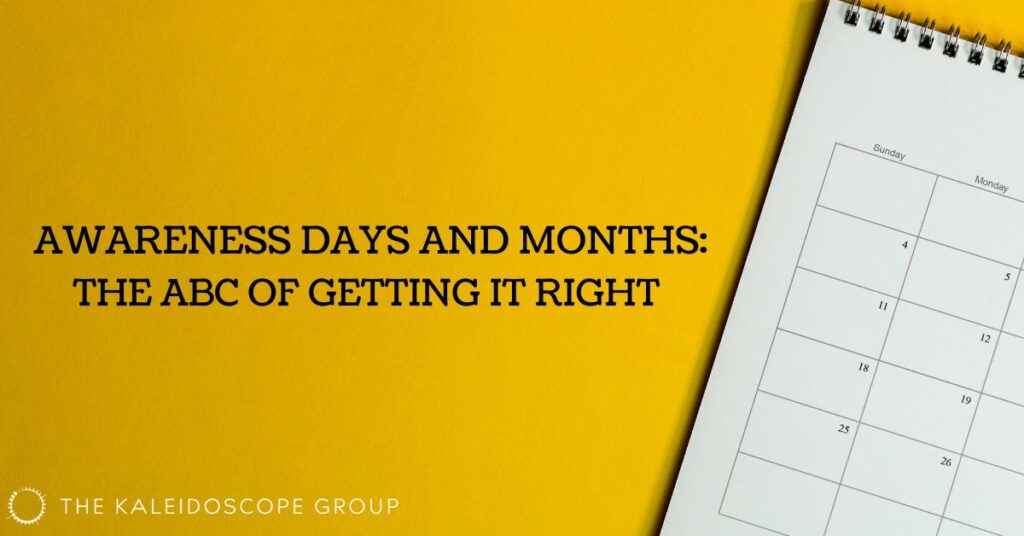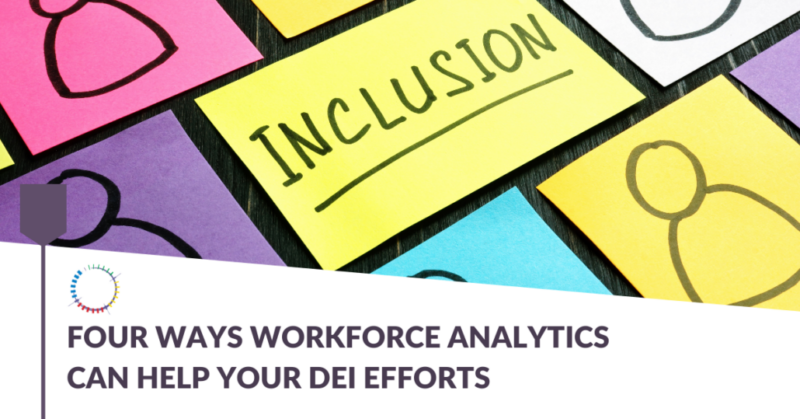Awareness Days And Months: The ABC Of Getting It Right
June 21, 2022

Are you using awareness days and months as part of your marketing calendar or as part of your employee engagement program? Sarah Black, Communications Consultant with our Global Practice explains that if you’re serious about your commitment to diversity, equity and inclusion, you need to think very carefully about how and when you use them.
Here’s Our ABC Of Getting It Right
If you’re planning a communications calendar for your organization, there’s a good chance that you’ve already marked at least one ‘awareness’ month, day or week on your activity schedule.
I have to be honest: I have a very complicated relationship with awareness days and months.
At their best, they can be vital and useful platforms to educate and engage key audiences about issues that are often hard to talk about with sustained, intentional and thoughtful campaigns that challenge attitudes and behavior. At their worst, they can often do more harm than good.
And if your organization is serious about diversity, equity and inclusion, then you need to be really careful about how you use awareness months.
However, if you can get it right – you might do something amazing!
When I’m working with clients, we often use my ABC criteria to determine whether to include specific awareness months in their communications calendar and I thought it would be useful to share it here.
A = Alignment:
Does the topic align with what your organization is about and more importantly what it is doing? Is there a good strategic fit?
More importantly, can you back up your communications and marketing around an awareness month with action? For example, it’s probably not a good idea to celebrate Pride loudly within your organization if LGBTQIA+ employees don’t feel safe or understood and if your policies don’t support their needs or you don’t cater to your LGBTQIA+ customers’ needs. It can’t be all rainbows if you aren’t being truly inclusive throughout the year. And if you’re a global brand working in regions where it is just not safe or legal to be non-binary, then there are some big intercultural dimensions that you have to consider.
Equally, a focus on Black History Month sounds great as a way of leading into discussions about racism but there’s a fundamental disconnect if there aren’t people of color in leadership or represented across your organization.
You need to align your adoption and amplification of awareness events with your brand, your customers, your employees’ experience and your culture. Failing to do so can have a negative impact on your reputation and your workforce.
B = Buy-in:
Do you have support from your stakeholders to do this?
It is always a fine line between showing leadership and having support to go out there with a strong message.
If you’re hoping to use an awareness month to educate and engage both your external and internal audiences, then support and participation becomes even more important.
To return to Black History Month, if this isn’t owned, led and delivered by your black employees internally, is it appropriate and useful? Does it truly center black voices and experiences?
If you’re planning lots of pink ribbons for Breast Cancer Awareness Month and haven’t talked to individuals in your organization who have experience with it, then you’re not actually amplifying, valuing or centering their voices.
Having buy-in from individuals and communities with lived experience of any issue you want to address is crucial to your activity being a success.
C = Clarity of Purpose:
The best question to ask is simply this: why? Why this awareness month and not another?
I’ve seen a few organizations disappear down the awareness month rabbit hole – they committed to one and now in the interests of fairness or equity, they feel they must give the same attention to about six others. And then it can all start to get a bit meaningless.
Whether you are using an awareness month to promote conversation and discussion internally or to engage your external stakeholders, you need to know what you want to achieve and why it matters. Clear objectives and key performance indicators are essential.
If you’re working with internal stakeholders, you need to know what action you want them to take in response to the activity. Is this about shifting attitudes and behavior internally, improving understanding of customer needs or even raising funds for a great cause? If you’re not sure, it could be time to think again.
Thinking Globally
Finally, a word about working globally. Not everything in your local awareness month calendar will work outside your local marketplace or workforce. There are cultural taboos, dynamics and even legalities that you need to consider, depending on which countries you operate in. If you’re not sure, ask. It is a lot better to lean in and learn than to try to undo damaged relationships because of a lack of local understanding.
If you can apply these broad principles to your approach to awareness days, weeks and months, you will be more likely to produce engaging and effective communications, enhance your reputation and genuinely generate awareness for issues that matter to your organization internally and in your community.
Written By:
Sarah Black is a Global Communications Consultant with The Kaleidoscope Group’s Global Practice.


